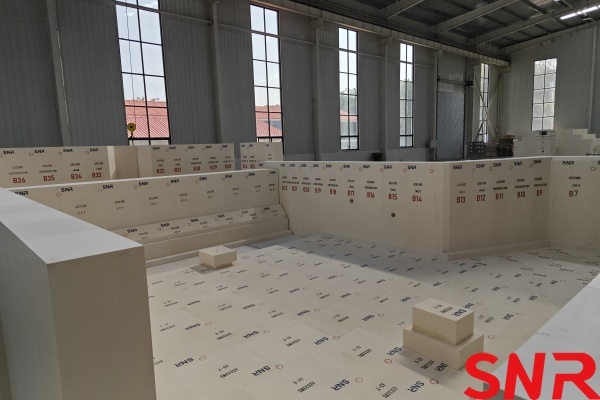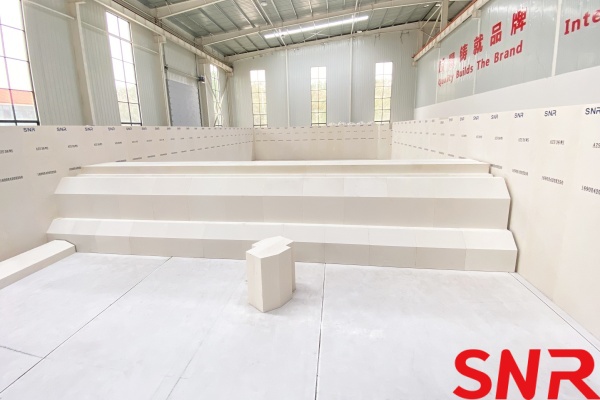1. Industry Background of Glass Furnace Technological Innovation
The global carbon neutrality goals and China‘s "Dual Carbon" policy are driving the glass industry towards a green and low-carbon transformation. In recent years, policies such as the Glass Industry Development Plan and the Comprehensive Work Plan for Energy Conservation and Emission Reduction have explicitly called for the elimination of outdated production capacity and the optimization of industrial structure, demanding that glass furnaces achieve reduced energy consumption and pollutant emissions. The government is guiding enterprises to implement technological upgrades in glass furnaces through financial subsidies, tax incentives, and other measures, accelerating the industry‘s technological advancement. For instance, several glass furnace renovation projects launched in 2025 all focus on improving thermal efficiency and reducing carbon emissions.
The growing demand for glass products in industries such as construction, automotive, and home appliances, coupled with higher requirements for product quality (e.g., uniformity, heat resistance), has highlighted the limitations of traditional glass furnaces. High energy consumption and insufficient temperature control precision in traditional glass furnaces lead to defects like streaks and knots, directly impacting downstream application performance. Energy consumption in traditional glass furnaces accounts for 40%-50% of production costs, with severe emissions of nitrogen oxides and dust. As environmental regulations become increasingly stringent, glass factories need to adopt methods such as oxygen-enriched combustion, waste heat recovery, and electric melting technologies to reduce energy consumption. The 2025 Glass Industry Report indicates that enterprises adopting new glass furnace technologies have achieved a 25%-30% reduction in energy consumption per unit product and a more than 40% decrease in exhaust emissions. Meanwhile, the circular economy model has driven the recycling rate of cullet to 90%, further reducing raw material consumption.
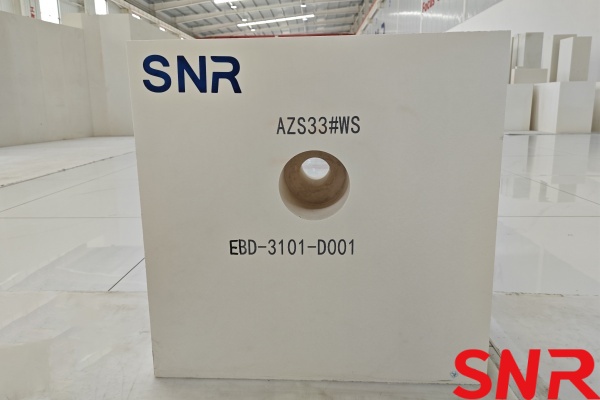
Suppliers of fused cast AZS refractory blocks have significantly improved erosion resistance through material composition optimization, becoming a key enabler of longevity-focused glass furnace renovations. Industry seminars, such as the 27th National Glass Furnace Technology Exchange Conference in 2024, have also served as important platforms for technology diffusion, promoting industry-academia collaboration and cross-disciplinary technology integration.
2. Main Trends in Glass Furnace Development
2.1 High Efficiency, Energy Saving, and Low-Carbon Transformation
Glass furnace technology is rapidly evolving towards energy conservation and consumption reduction. Driven by carbon neutrality policies, technologies such as waste heat recovery, oxygen-enriched combustion, and low-nitrogen combustion have become industry standards. For example, oxygen-enriched combustion technology reduces nitrogen content, decreases flue gas emissions and nitrogen oxide generation, while improving thermal efficiency. The widespread adoption of all-electric melting furnaces and hybrid electric-gas furnaces further reduces reliance on fossil fuels. Additionally, the design of large-scale glass furnaces (e.g., ultra-large furnaces in the photovoltaic glass sector) lowers energy consumption per unit through mass production, coupled with the use of clean energy (natural gas, green electricity), driving reductions in carbon emissions throughout the lifecycle.
2.2 Intelligent and Digital Upgrades
The deep integration of intelligent control systems and IoT technologies is reshaping the operational models of glass furnaces. By integrating sensors, real-time data collection, and cloud-based analysis, precise control of melting temperature, pressure, and flow is achieved, reducing manual intervention. For instance, big data algorithms can predict the erosion cycle of refractory materials, optimizing maintenance schedules, while AI models assist in dynamic adjustments of process parameters, improving glass melt uniformity. These technologies not only enhance production efficiency (e.g., single-furnace melting capacity exceeding 500 tons/day) but also reduce defect rates and operational costs.
2.3 Refractory Material Innovation and Structural Optimization
Breakthroughs in refractory material performance directly determine the lifespan of glass furnaces and the quality of glass. Fused cast AZS (alumina-zirconia-silica) refractory blocks, known for their high erosion resistance and low glass phase exudation, have become the material of choice for key areas such as regenerators, melting tanks, sidewalls, and throat. The latest generation of AZS products, through optimized zirconia content and crystal structure, significantly extends service life and reduces the introduction of non-glass phase impurities, thereby minimizing defects like streaks and bubbles. Meanwhile, the application of spinel-based and magnesia-zirconia composite refractory materials further meets the specialized melting requirements of high borosilicate glass and other specialty glasses.
2.4 Scaling Up of Glass Furnaces
For glass products with relatively uniform colors, the scaling up of glass furnaces offers numerous advantages:
A. Reduced Investment in Glass Furnaces:
The investment in large glass furnaces does not increase linearly compared to smaller ones. For instance, a 120㎡ glass furnace replacing two 60㎡ furnaces eliminates two sidewalls, two burners, and two regenerators. The regenerator size for a 120㎡ furnace is not significantly different from that of a 103㎡ or even a 105㎡ furnace. This also applies to feeding equipment, combustion control systems, and labor costs (e.g., furnace operators, saving over 200,000 RMB annually in labor costs alone) and maintenance personnel.
B. Reduced Footprint:
Large glass furnaces occupy less space.
C. Lower Energy Consumption:
The surface area and heat loss of large furnaces do not increase linearly. Heat loss from openings and flue gas emissions also does not rise proportionally with melting area. According to foreign data, increasing the melting area by 1.8 times can boost output by 2.2 times while reducing production costs by 11%.
D. Better Compatibility with Advanced Forming Equipment:
Large furnaces can be paired with more advanced forming equipment, such as 12-section double-gob or triple-gob IS machines.
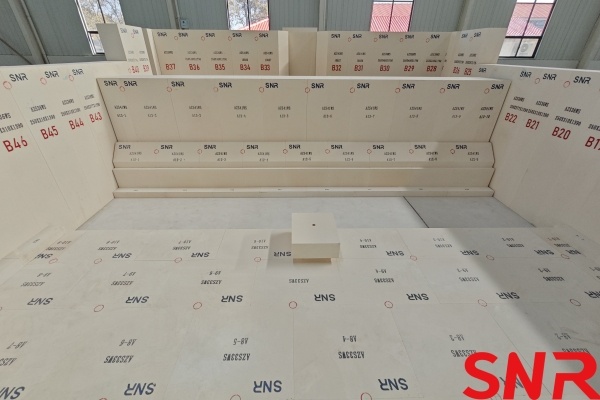
2.4.1 Key Considerations for Scaling Up Glass Furnaces:
Refined Management:
Scaling up glass furnaces is not merely about increasing their size but also about implementing refined management during daily operations. While many domestic manufacturers excel in front-end processes like forehearths and forming (e.g., nine-point temperature measurement in forehearths, mastery of narrow-neck press-and-blow processes), some daily-use glass producers still lack attention to the back-end, particularly in raw material management. Float glass manufacturers, for example, demonstrate meticulous raw material management, which is worth learning from. Simply building a batching house and installing a batching system does not equate to refined management. Stability in raw material management—such as particle size and gradation, chemical composition consistency, and moisture content in batch materials—must also be ensured.
Four Stability Principles:
To maximize the benefits of larger furnaces, it is crucial to maintain the "Four Stabilities" during daily operations: stable temperature, stable output, stable furnace pressure, and stable atmosphere. Some factories, in response to increased orders, significantly raise furnace temperatures to boost output, which severely impacts furnace lifespan and contradicts the principles of refined management. Additionally, large fluctuations in furnace pressure can cause considerable damage. Maintaining a stable atmosphere at various points in the furnace plays a vital role in ensuring product quality.
2.5 Increasing Adoption of Electric-Powered Glass Furnaces
With the expansion and improvement of large-scale domestic water conservancy facilities, as well as the growth in electricity generation from renewable sources such as hydropower, wind power, and solar power, electricity prices have decreased. In some regions of China, there is already a mandate to replace gas with electricity, leading to the increasingly widespread use of electricity in glass furnaces. Large glass furnaces commonly employ electric boosting: while the scaling up of glass furnaces is limited by structural safety concerns, the flexible placement of electrodes in furnaces allows for the integration of electric boosting systems. These systems increase the temperature of the molten glass, enhancing both output and product quality while reducing flue gas emissions and improving overall thermal efficiency.
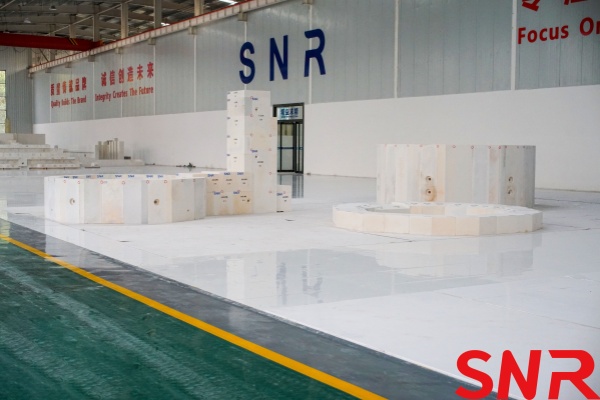
All-electric melting furnaces are becoming more prevalent: Due to the impact of electricity prices, electric furnaces are currently mainly used for special types of glass (e.g., borosilicate glass, opal glass) and in specific regions (e.g., near airports where tall chimneys are restricted). Electric furnaces feature top-loading (cold top) and bottom-discharging (vertical melting), which not only reduce the volatilization of boron and fluorine but also minimize stratification in borosilicate and opal glass, thereby improving glass quality. Under the current high-pressure environmental regulations, if electricity prices continue to decline, the application of electric furnaces will become even more widespread.
2.6 Broader Application of Oxy-Fuel Glass Furnaces
Oxy-fuel combustion glass furnaces, with their high flame temperatures, offer advantages for melting refractory glasses. They produce lower flue gas emissions and have a smaller environmental impact. Additionally, the hydroxyl-rich (-OH) environment in oxy-fuel furnaces enhances glass whiteness and refractive index while reducing the need for oxidants in glass formulations. The primary barrier to the widespread adoption of oxy-fuel furnaces has been their high operating costs. However, with declining electricity prices and improvements in oxygen lance design and flame length, the use of oxy-fuel combustion furnaces is expected to increase.
2.7 Integration of Traditional Flame Glass Furnaces and Oxy-Fuel Furnaces
The scaling up of glass furnaces is constrained by structural safety and flame length limitations. By incorporating the characteristics of oxy-fuel furnaces, it is possible to improve both the quality of the molten glass and production output. This approach leverages the respective advantages of traditional flame glass furnaces and oxy-fuel furnaces.
2.8 Widespread application of clean energy
Due to the large price difference between coal and natural gas, many factories are still reluctant to use natural gas. However, the waste gas generated by natural gas combustion is more than 20% less than that generated by burning furnace gas. Natural gas has a low sulfur content and almost no dust. If nitrogen oxides are controlled at the source, the scale of environmental protection equipment for tail gas treatment after natural gas combustion is more than 20% smaller than that of burning coal gas (desulfurization equipment is not required), so the investment in environmental protection facilities is low; since the amount of sulfide and dust that can be treated in the waste gas is small, the amount of environmental protection facilities disposed is small, so the life of environmental protection facilities is long.
The cost of environmental protection treatment of natural gas in glass furnaces of the same scale is only 25% to 35% of that of burning coal gas. In addition, the furnace temperature of natural gas glass furnaces is stable, and the product quality and product qualification rate are improved, especially for high-value-added products such as high-white materials and refined white materials. The whiteness of the product will be greatly improved with the same raw materials. Therefore, from the comprehensive cost comparison, burning natural gas is not higher than burning coal.
At the 75th United Nations General Assembly, President Xi announced that my country will strive to achieve carbon neutrality by 2060. Therefore, my country‘s natural gas supply channels will be more diversified and the supply of natural gas will be more stable. Recently, Japanese companies such as Toshiba announced that they would no longer accept orders for coal-fired power plant equipment. Therefore, it is only a matter of time before clean energy is used on a large scale.
2.9 Accurate control of the combustion state of glass furnace flames
Due to the people‘s desire for blue skies and white clouds, the country‘s emission requirements for pollution sources and industrial glass furnaces will become higher and higher. Industrial glass furnaces control the generation of nitrogen oxides from the source and reduce the amount of nitrogen oxides generated, which can not only reduce the investment in environmental protection facilities (small scale), but also extend the life of environmental protection facilities (small processing volume) and reduce production costs. To reduce the amount of nitrogen oxides generated in glass furnaces, it is necessary to accurately control the combustion state of glass furnace flames, that is, to prevent the large-scale generation of nitrogen oxides, but also to prevent incomplete flame combustion, other pollution and energy waste.
2.10 Feeding equipment and feeding methods that change the thermal conductivity of the batch
At present, most of the glass batch materials in China are powder and broken glass, which are loose and have poor thermal conductivity. Moreover, the feeding equipment simply replaces manual labor to push the batch into the furnace. The movement trajectory of the pusher (push rake) of most feeding equipment is a straight line, that is, reciprocating linear motion. This type of feeding equipment only pushes the batch into the furnace, and it does not change the thermal conductivity of the batch. In the past few years (actually more than 20 years ago), there was a device similar to coal briquette in China, which pressed the batch into blocks, making the batch compact, thereby changing the thermal conductivity of the batch, but due to the high operating cost, it is difficult to promote.
Twenty years ago, the glass furnace imported from abroad was equipped with a wrap-in feeder. When feeding, it squeezed the batch material into the glass liquid, and the high-temperature glass liquid below rose up, which could better fill some of the pores in the batch material. Moreover, when the push rake of the wrap-in feeder was lifted up and retracted, some glass liquid was also brought up to cover the surface of the batch material, thereby changing the thermal conductivity of the batch material. This feeder can also adjust the feeding times in the left, middle and right directions at will, so that the batch material is distributed in small piles on the surface of the glass liquid, realizing the real "thin layer feeding". According to the information: the wrap-in feeder can save about 5% of energy and reduce the corrosion of the batch material to the sidewall blocks. It is believed that it will be widely used.
2.11 Improve the sealing of the combustion air system, increase the exhaust temperature, and meet the requirements of environmental protection low-temperature denitrification
Now the environmental protection low-temperature denitrification equipment requires the flue gas temperature to be between 250℃ and 280℃. Some low-temperature denitrification equipment requires no less than 210℃. The height of the grid body of the single-channel regenerator is about 11 meters. At the outlet of the regenerator, we have tested that its temperature is between 550℃ and 650℃, sometimes even higher (depending on the melting temperature); the top of the three-chamber (small air regenerator) of the three-channel regenerator is tested to be 650℃ to 730℃, sometimes even higher (depending on the melting temperature). Some companies have low flue gas temperature entering environmental protection equipment, and use fuel to heat the flue gas, consuming more energy; this not only increases energy consumption, but also increases the amount of flue gas and the burden on the exhaust equipment.
According to our understanding, the sharp drop in flue gas temperature is caused by equipment leakage after the outlet of the regenerator, unreasonable design of the combustion air system, especially the air exchanger, rough processing and manufacturing, inadequate installation, and other structures with large leakage, which leads to low flue gas temperature when entering the environmental protection facility. Eliminating unreasonable combustion air systems and increasing the air tightness of this section of equipment are issues that require the attention of glass manufacturers.
2.12 Modularization of glass furnace construction improves the speed and quality of furnace construction
The shape, size and masonry mode of glass furnaces are not qualitatively different from those decades ago. The current situation of the glass furnace construction industry is poor working environment, high labor intensity, low efficiency and low quality. Therefore, young people in the entire industry are unwilling to participate, and professional and technical workers are also unwilling to participate. The technical level of the entire industry is worrying, and even affects the development of the entire glass industry (glass furnaces have short life). Now the mechanization, automation and intelligence of all walks of life in the whole world and at home are the trends of social development. How to replace manual masonry with mechanization and automation to reduce or reduce heavy manual labor has become a trend, and large production lines are emerging in an endless stream; modularizing the masonry of glass furnaces and masonry in factories can give full play to the role of manipulators and robots. When the modules are transported to the site for installation, they can not only improve the speed of masonry installation, but also improve the quality of masonry. This is the need of social development and the necessity of history.
2.13 Establish a special batch material production enterprise to centrally prepare batch materials
There are many advantages to centralized batch material production:
A. Low centralized procurement cost for glass raw materials: Due to the large purchase volume, the purchase unit price of raw materials and the centralized transportation cost can be optimized. It can also save travel expenses and manpower.
B. Fully utilize batching equipment and reduce the cost of equipment dismantling and amortization: Generally, it is not cost-effective for an enterprise with a daily output of dozens or hundreds of tons to build a batch material workshop. It not only occupies land, but also has low equipment utilization rate. It also needs to build a dust removal system, and the cost of dismantling fixed assets in the batch material is high; in areas with high air humidity, the raw materials in the batch material that absorb moisture more easily adhere to the equipment, increasing maintenance costs.
C. Environmental protection facilities are more efficient, and generally small factories are unwilling to install environmental protection facilities in the batching system. The cost of centralized environmental protection facilities is lower than that of each unit amortizing it to each ton of batch material. Centralized environmental protection facilities are also convenient for dust treatment, and are in line with the national industrial policy of intensive production;
D. Glass physical and chemical laboratories can be centrally established to guide production scientifically: many small-scale enterprises now do not have their own physical and chemical laboratories, and cannot timely analyze and test the raw materials of glass entering the factory, nor can they master the physical and chemical properties of the products. The analysis of problems in the production process is purely based on experience, which delays the time to solve the problems;
E. It is not necessary for each production enterprise to configure formula management personnel. Optimize the glass formula to the greatest extent, reduce resource waste, and reduce the cost of batch materials; it also saves energy and extends the life of glass furnaces;
With the increasingly fine and professional division of labor in large-scale production society, establishing a special batch material production enterprise, changing some scattered, small, and backward production processes, and centrally providing glass batch materials suitable for various glass production is another form of intensive production and an inevitable demand for social development. Solving the furnace material problem means solving the technical problems of the key links of glass production enterprises, so that glass product manufacturers can concentrate on the market and produce good products needed in the market.
2.14 Standardization and normalization of glass furnaces is a long-term and continuous process
Because glass production enterprises are limited by their own conditions, such as technical strength, management level, on-site conditions, energy structure, glass types, raw material supply, product structure, etc., it is very difficult to standardize glass furnaces. However, in order to achieve the goals of high quality, high efficiency, low emissions, long furnace life, and low cost of glass furnaces, standardization of glass furnaces must be adhered to, even if it is a long-term work. Although many gratifying progresses has been made in recent years, the domestic industry is still not enough and needs further standardization, including design, furnace construction, baking furnace, refractory management and control, automation, intelligent control, and daily operation and maintenance of glass furnaces. All aspects need to be paid great attention to and work together!
Henan SNR Refractory Co., Ltd. is dedicated to the manufacturing research and development of fused cast AZS refractory materials for the glass industry. Meanwhile, SNR can provide total solutions and services for glass furnace design, glass furnace construction, renovation, and upgrading. Please contact me if you have any requirements.
CONTACT: zoe@snrefractory.com
WEBSITE: www.snr-azs.com


